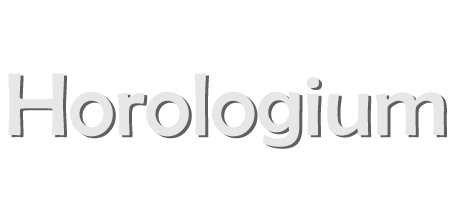
Originally named as Horologium Oscillatorium, Horologium is one of the small, inconspicuous constellations of the southern hemisphere. Horologium Oscillatorium means ‘the pendulum clock’. The constellation was created by the French astronomer Nicolas Louis de La Caille between 1750–1754 and was named in honour of Christiaan Huygens, the Dutch horologist and scientist who invented the device in the 17th century and is also known for discovering Saturn’s rings. However, later the name of the constellation was shortened to Horologium or the Clock. There are no bright stars in the constellation and it is easily visible to those living in the southern hemisphere.
The major stars of this constellation include:
- α Horologii (Alpha Horologii): α Horologii is the brightest star in this constellation with a visual magnitude of about 3.86. It is basically a giant star and is about 117 light years away from the sun.
- R Horologii (HD 18242): R Horologii is basically the second brightest star in this constellation. It is a red giant, about 100 light years away from the earth. R Horologii has a period of about 407.6 days and its brightness varies from 4.7 to 14.3. It has a visual magnitude of 4.7.
- β Horologii (Beta Horologii): β Horologii is basically a giant star and is about 310 light years away. With a visual magnitude of 4.979, it is the third brightest star in this constellation.
- δ Horologii (Delta Horologii): This star has a visual magnitude of 4.93 and is about 175 light years away.
- i Horologii (Iota Horologii): Iota Horologii is basically a yellow dwarf in this constellation. It is about 56 light years away and is about twice as luminous as the sun. Iota Horologii has a visual magnitude of about 5.40. In 1998, an extra–solar planet, about the size of Jupiter was discovered orbiting the star.
- GJ 1061: GJ 1061 is basically a red dwarf, about 11.99 light years away from the earth. It has a visual magnitude of 13.03 and is the 20th closest star to the sun.
Some of the notable deep sky objects in this constellation are:
- Horologium Super cluster: It is a massive super cluster, covering an area of 12°x 12° and is about 550 million light years away. This super cluster comprises of about 5000 galaxy groups including 30,000 giant galaxies and 300,000 dwarf galaxies. The closest part of this galaxy is about 700 million light years away from the sun and the farthest part is about 1.2 billion light years away.
- NGC 1261: NGC 1261 is basically a globular cluster discovered by a Scottish astronomer James Dunlop in 1826. It has a visual magnitude of about 8.3 and is about 53,500 light years away from the sun. It comprises of faint stars.
- AM1: In this constellation, AM1 is basically a globular cluster located at a distance of 398,000 light years.
- NGC 1512: NGC 1512 is a barred spiral galaxy in Horologium. In size, it is 8.9’x5.6’ and is about 70,000 light years away. This barred spiral galaxy is known for its starburst ring and it comprises of young clusters. It has a magnitude of about 11.1 and is about 30 million light years away from the solar system.
Horologium lies in the first quadrant of the southern hemisphere and can be seen at latitudes between +30° and -900.
It occupies an area of about 249 square degrees, making it the 58th constellation in the sky.
There is no mythological story associated with it as it was created to honour the inventor of the pendulum clock, Christiaan Huygens.
Horologium is surrounded by constellations like Caelum, Dorado, Eridanus, Hydrus and Reticulum.


